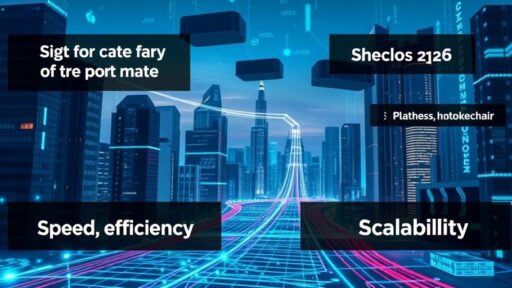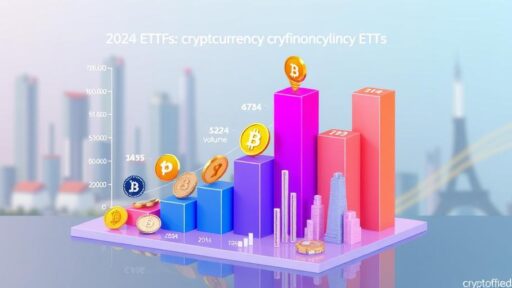The world of finance is rapidly changing, driven by technological advancements and evolving user demands. As we enter 2024, a key question emerges: will Decentralized Finance continue its meteoric rise, or will centralized systems remain dominant? Understanding the strengths and weaknesses of both approaches is crucial for navigating this evolving landscape.
The Evolving Landscape of Finance
Centralized Finance: A Familiar System
For decades, the financial world has been dominated by centralized institutions. Banks, brokers, and exchanges act as intermediaries, controlling access to financial services and managing transactions. This model provides a level of familiarity and security for many users, but it also comes with inherent limitations.
Decentralized Finance: The Rise of Disruption
Decentralized Finance (DeFi) challenges the traditional paradigm by removing intermediaries and leveraging blockchain technology. This enables peer-to-peer transactions, open access to financial services, and enhanced transparency. DeFi’s core principles, such as transparency and user control, have attracted a growing community of individuals and institutions.
Key Trends Shaping the 2024 Outlook
Regulatory Scrutiny and Adoption
2024 will see increased regulatory scrutiny of the DeFi space. Governments and financial authorities are grappling with how to regulate this emerging technology, balancing innovation with consumer protection. This scrutiny may lead to greater adoption of DeFi by mainstream institutions as regulations provide a framework for responsible growth.
Interoperability and Cross-Chain Solutions
The current DeFi landscape is fragmented, with different platforms operating on separate blockchains. Interoperability solutions, such as cross-chain bridges, will play a crucial role in connecting these ecosystems, enabling seamless asset transfers and interactions between various DeFi protocols.
The Rise of DeFi 2.0
DeFi 2.0 focuses on addressing the limitations of early DeFi protocols, such as scalability and security. New projects are emerging with innovative approaches to governance, risk management, and user experience, promising a more robust and user-friendly DeFi ecosystem.
Institutional Adoption and Integration
More and more institutional investors are exploring DeFi opportunities, seeking to diversify their portfolios and tap into the potential of decentralized finance. This trend will drive further development and adoption of DeFi protocols, leading to greater integration with traditional financial systems.
Centralized Finance: Strengths and Weaknesses
Accessibility and User Friendliness
Centralized finance platforms are often user-friendly, offering a familiar interface and readily available support. They cater to a wider range of users, including those new to the financial world.
Regulation and Security
Centralized institutions are subject to strict regulations and oversight, providing a level of security for users. They also have established security measures in place to protect against fraud and cyberattacks.
Limited Innovation and Transparency
Centralized finance systems are often slow to adopt new technologies and can lack transparency. Their centralized nature can limit innovation and restrict access to certain financial services.
Decentralized Finance: Opportunities and Challenges
Transparency and Security
Decentralized finance offers unparalleled transparency, with all transactions recorded on a public blockchain. However, security concerns remain, as smart contracts and decentralized platforms can be vulnerable to exploits.
Innovation and Accessibility
DeFi encourages innovation, allowing developers to build new financial products and services without relying on intermediaries. This open and accessible nature opens up opportunities for individuals and communities to participate in the financial system.
Scalability and User Experience
Scalability remains a challenge for many DeFi platforms, as they struggle to handle high transaction volumes and maintain low fees. User experience can also be complex, requiring technical knowledge and understanding of blockchain technology.
The Future of Finance: A Hybrid Approach?
The Potential for Coexistence
The future of finance may not be an all-or-nothing choice between centralized and decentralized systems. Instead, a hybrid approach may emerge, leveraging the strengths of both models to create a more inclusive and efficient financial ecosystem.
Bridging the Gap Between Centralized and Decentralized Systems
Centralized institutions are increasingly incorporating DeFi technologies into their offerings, recognizing the potential for innovation and efficiency. This trend suggests a future where both centralized and decentralized systems coexist and collaborate, driving greater financial inclusion and innovation.
Navigating the Future of Finance
Key Takeaways for Investors and Users
Understanding the fundamental differences between centralized and decentralized finance is essential for making informed decisions. Staying informed about the latest trends, evaluating the risks and rewards of each approach, and diversifying your portfolio can help you navigate this evolving landscape.
The Importance of Staying Informed and Adaptable
The future of finance is dynamic and unpredictable. Staying informed about emerging technologies, regulations, and market trends is crucial. Adaptability and a willingness to learn and evolve are essential for navigating this rapidly changing landscape. The future of finance is bright, with both centralized and decentralized systems playing crucial roles in shaping a more inclusive and innovative financial world.






